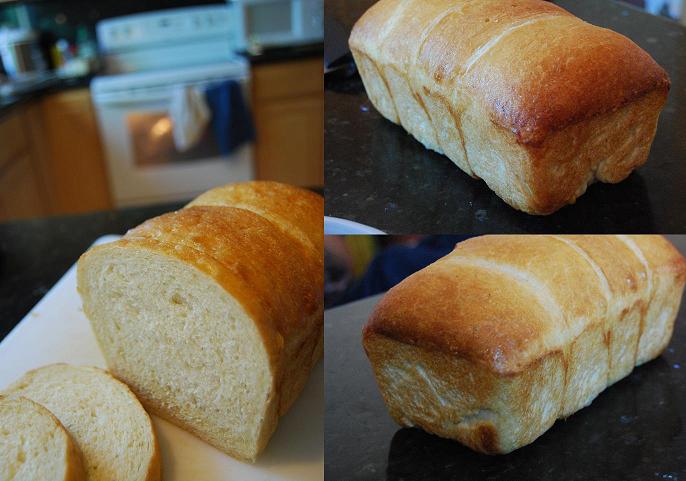
CaP 3 Sandwich Loaf
I really just wanted to put the dough into a bread pan and see what happened. This is pretty much the same thing as my CaP 2. The difference here was that I introduced two folds during the fermentation and I baked the loaf at 400 F, brushed with egg wash. This is in comparison to baking at 500 F with steam.
Overall, I thought that the flavor was lackluster, while the texture was good, like high quality store bought sandwich loaves, even. The crumb was fluffy, if not full of large bubbles, I believe this is the "cottony" texture described by DiMuzio. But it may also be that this is how bread springs in a bread pan, and that all sandwich loaves result in this texture.
For the next round of baking, I will cut the yeast to a quarter of what I used here. It should take much 4 times longer to rise, resulting in a 3 hour bulk fermentation rather then a 45 minute one. Perhaps this extended period of bulk fermentation will give me the flavor I am looking for.



Comments
to showcase your beautiful loaf. I don't have to squint anymore.
I haven't seen sandwich loaves with big bubbles. Your crumb looks right. I've seen big holes inside a loaf when ingredients with high water content like ham are wrapped inside the dough.
Yippee
Yeah, this is my first sandwich loaf, ever. So I'm glad someone with more experience has verified what I thought.
Its difficult to take good pictures when you're baking at night! Luckily for me I've been baking in the morning recently.
Looks like a nice sandwich loaf. I find most of my white sandwich bread is low on the "Big Flavor". Maybe that's what peanutbutter and jelly is for :) Dave
Hm. I can't accept that. There's gotta be a way to make full flavored sandwich loaves!
Hi Gabriel,
In my experience, it is "time" that improves the crumb flavor; that's what "punching down" is for after first fermentation - to prolong the rising/fermentation - in yeasted breads.
Another way is using the pre-ferments which you are alreading using. Perhaps you could try 24 or 36 hours pre-ferments (but that may compromise other quality you are looking for - e.g. loaf volume). It's a matter of experiments.
And of course the ultimate of flavor improvers is sourdough. Can you imagine with just flour, water, and a little bit of salt, how flavorful the crumb can be - all because of sourdough starter. There is a great method in Fromartz Chewswise's baguette recipe. Don't be put off that it is a recipe for baguette; nothing says you can't use the dough for sandwich loaf if THAT is the shape you want. Also Fromartz has a great article that goes with this baguette recipe, highly recommended reading. These were first brought to my attention by Susan's wild yeast blog.
Let us know if that helps at all.
Shiao-Ping
I have always felt that sourdough is bold, flavorful style of bread yet it is possible to make equally flavorful (if different) bread without making sourdough. In this case a preferment would serve as the starter.
Well time is definitely a necessary component. I had found during this session that at 0.5% instant yeast my dough was rising in 45 minutes. To offset this I introduced two folds during the bulk fermentation, to extend the final time to about 2 hours and 15 minutes. In addition, a preferment was used.
When you describe 24 and 36 hour preferments, are you referring to a 36 hour retarded yeast fermentation or a fermentation at room temperature?
The method you propose from the Cheswise is indeed interesting. It sounds very much like a combination of folding and cold bulk fermentation (Reinhart).
This I definitely will try.
Thank you for all your advice and responses!
Sorry that I was not being clearer - I meant 24 to 36 hour fermentation in the refrigerator (ie, cold retardation). Any cool room temp would still be too warm, I think (unless it's very little yeast you used).